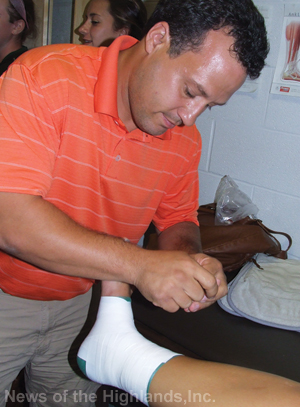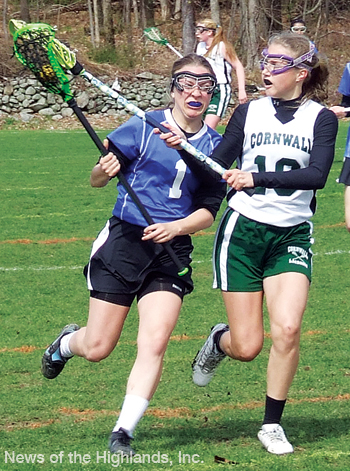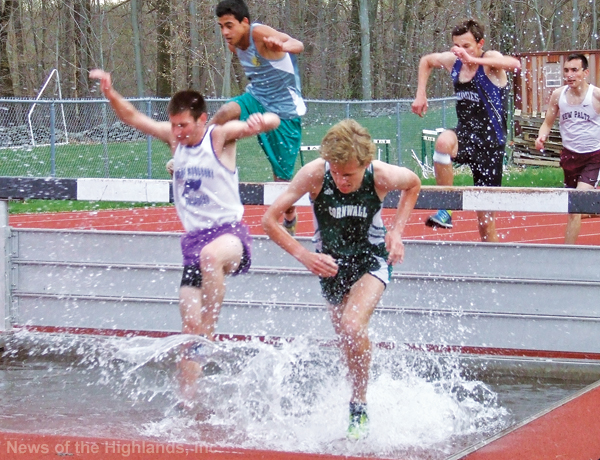
Spectators see him on the sidelines at sporting events. They watch him rush onto the field or the court if someone gets hurt. But they don’t see him during the busiest time of the day.
Mark deCastro has been working with Cornwall athletes for six-and-a-half years. Not many of them know his last name. They simply call him “Trainer Mark.”
At the start of the school year, we asked Trainer Mark if we could interview him before a game. “How about during a game?” he replied. “Between two and four o’clock I’m just too busy.”
On week days, Cornwall’s trainer shows up at the high school at one o’clock. He spends an hour doing paperwork, and then gets ready for the line that’s about to form at his door.
On Sept. 5, there’s a sea of athletes in green jerseys waiting for the trainer a minute after the school bell rings. The soccer team is playing in Pine Bush, and some of the girls need to see him before they get on the bus.
For most of them, it’s not a first visit. They’ve had minor sprains or strains during the pre-season, and the trainer has advised them to come to his office before a practice or a game.
The training room is compact. There’s a cot, a training table and a file cabinet. The line stretches through an outer office and into the corridor. But people don’t have to wait long.
The trainer wraps ankles and wrists (for support) at a remarkable pace. Athletes are on and off the table in a minute. In one case, the trainer points to a diagram on the wall to show a girl the muscle that’s causing her discomfort.
Some athletes are wrapped in ice to freeze and kill the pain before it’s time to play. On Sept. 5, there are no new injuries for the trainer to evaluate. He leaves his office and heads to the football field to see a player who is not yet ready for action.
At the trainer’s request, the player runs 20 yards back and forth, and says he feels comfortable. But when he tries a figure eight, he experiences the familiar ache.
On typical afternoons, the trainer will visit each coach to specify what their injured athletes can do. He will also work with players who are recovering from concussions. There’s a series of steps they have to take before they’re allowed to play.
But Sept. 5 is slower than most afternoons for the trainer; so there’s time for a question. “You work with hundreds of athletes,” we say. “Do you know all of their names?”
“Most of them,” he says without hesitation. Then he corrects himself. “If I don’t know their names, I know their injuries.”



